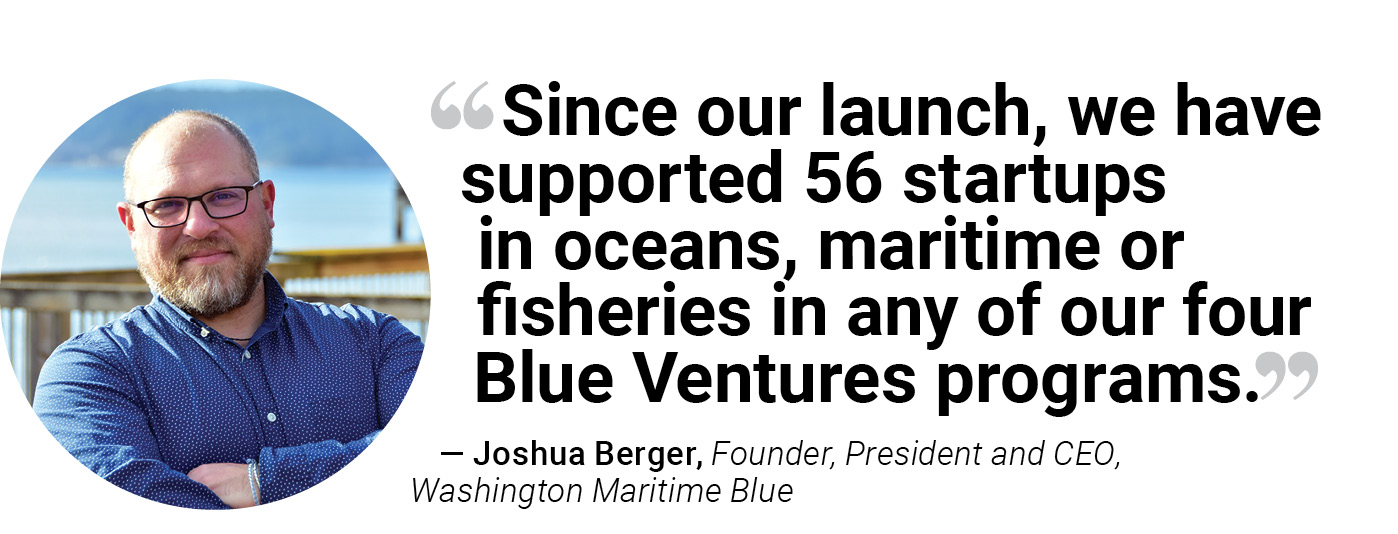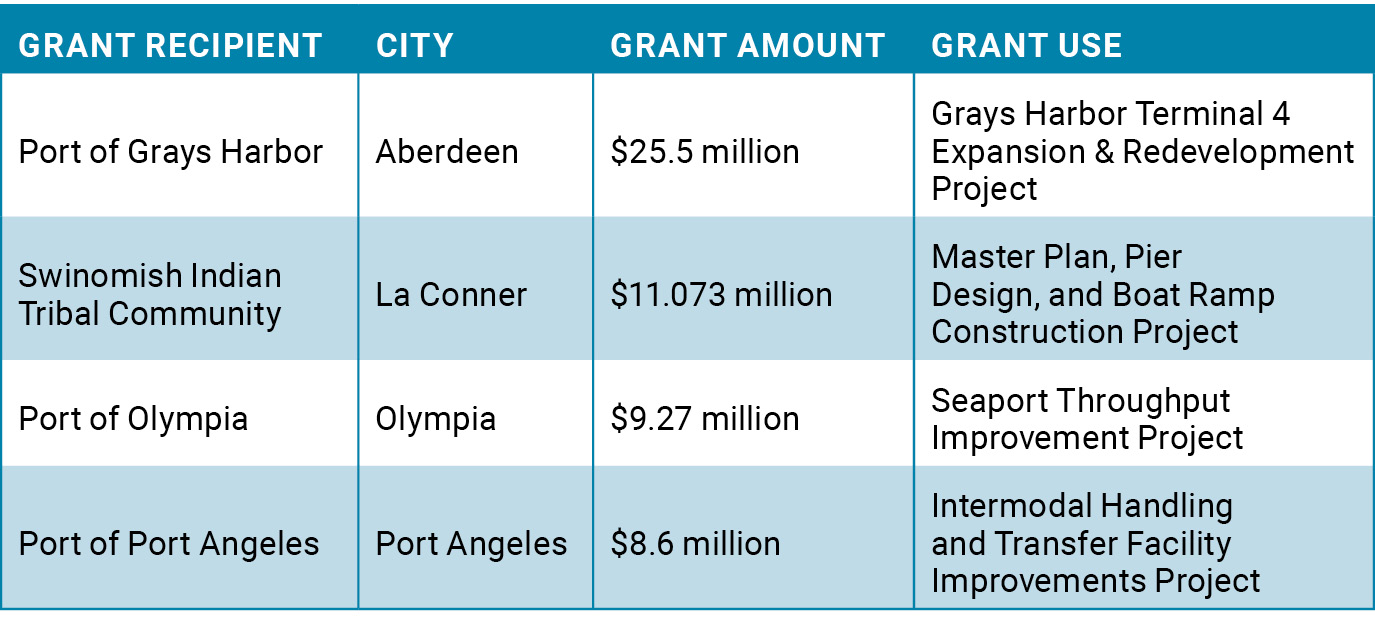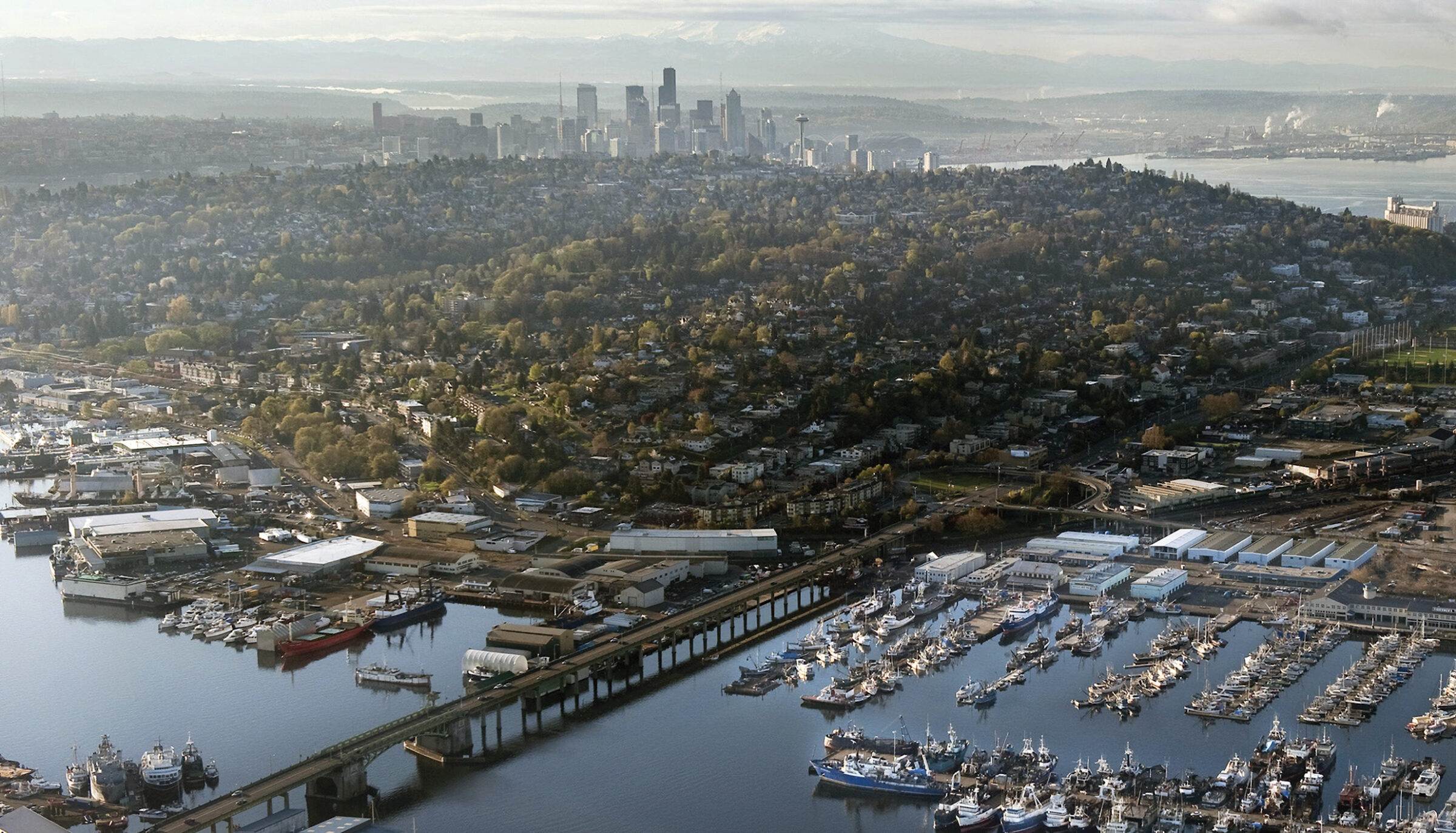The scale of sea life ranges from the gigantic blue whale to the most microscopic of plankton. In the same way, the scale of the global maritime economy stretches from the largest of fisheries, shipbuilders and ports to the newest generation of fledgling startups.
Look through your scuba mask at Washington’s Maritime Blue organization to get a glimpse of this dynamic business ecosystem.
“Since our launch, we have supported 56 startups in oceans, maritime or fisheries in any of our four Blue Ventures programs,” says Washington Maritime Blue Founder, President and CEO Joshua Berger. “Collectively they have raised more than $400 million in both dilutive and non-dilutive capital and have created more than 400 jobs in our region.” Among other accomplishments, the cluster organization helped Silverback Marine find a new headquarters location at the Earley Business Center at the Port of Tacoma in 2021.
Most recently the organization partnered with the Port of Seattle to launch a Blue Innovation Incubator in the Blue Hub at the port’s Fishermen’s Terminal with an initial cohort of five companies operating in areas such as maritime decarbonization, renewable ocean energy (the SkillWind digital workforce development platform from RMZ Marine Construction), sustainable fishing & seafood (Astraeus Ocean Systems, Oo-Nee Sea Ranch), ocean health and sustainability (Earthwise Sorbents, UnCruise Adventures), and the digital transformation. The new program supports Maritime Blue’s larger hub-and-spoke Blue Ventures model, said Berger in August 2023, noting, “Our goal is to support founders at multiple points along their journey so that we have a complete innovation ecosystem from ideation to commercialization to accessing new markets.”
Moreover, with the Port’s final authorization for the completion of the Maritime Innovation Center at Fishermen’s Terminal, “Maritime Blue intends to relocate its activity, including the Incubator, from its existing Blue Hub co-working space to the new building that is slated to open by the end of 2025,” the organizations announced.
Washington Maritime Blue describes itself as “a strategic alliance formed to accelerate innovation and sustainability building on one of the most diverse, interdependent and strong maritime and ocean economies in the U.S. Add Washington’s strengths in technology development, advanced manufacturing and a culture of best practices,” Maritime Blue says, and “the region is quickly becoming a center of excellence to grow jobs, protect the environment and support resilience in communities.”
Asked to gauge the interest the program and its family of startups has generated among larger companies, Berger says, “This is the crux of our programs and the differentiator of how our cluster supports our startups through intentional connections and matchmaking. Our 120-plus members range from some of the largest maritime corporations to local, one-person engineering shops, plus research institutions, government agencies and community organizations. They act as a nest of support through mentoring, market analysis, access to early demonstrations, pilots and even early sales.”

Even during the pandemic, he says, “our region has seen continued investment in early-stage, impact-oriented startups, specifically in clean tech as well as the blue economy. Programs like ours are picking best-in-class impact investments and it becomes a flywheel effect. Those high-impact venture-scale startups see success, investors recognize the opportunities, and we continue to attract incredible founders.”
State Stands Tall in National Picture
The latest report on the U.S. marine economy from the National Oceanic and Atmospheric Administration finds that in 2020, the marine economy’s 164,000 business establishments employed about 2.9 million people, paid $132 billion in wages and produced $258 billion in goods and services, accounting for about 2.1% of the nation’s employment and 1.2% of its GDP. Even as the overall marine economy struggled because of the pandemic (especially in tourism), marine transportation added 55,000 jobs (a 9.4% increase) in 2020 as logistics activity exploded.
What is Washington contributing? In 2019 (the most recent year with full data), Washington’s marine economy encompassed 6,834 businesses, 143,029 employees and $6.8 billion in wages. Marine construction had the highest average wage per employee at $101,592. Washington ranked No. 6 out of 30 coastal states for marine employment, and No. 5 for marine economy GDP. And the state’s marine economy increased in value by 27% since 2009.
Even if the pandemic put a dent in tourism in Washington like every other state, new projects aim to bring a new wave of investment to the state’s port and fishery infrastructure.
In fall 2022, more than $71 million in federal grants were awarded to the Port of Grays Harbor, Northwest Seaport Alliance Port of Seattle, Swinomish Indian Tribal Community, Port of Olympia and the Port of Port Angeles through the U.S. Department of Transportation’s Maritime Administration’s (MARAD) Port Infrastructure Development Program (PIDP). The five projects represent more than 12% of all PIDP projects nationally, demonstrating the importance of the state’s coastal economy to the nation’s.
The Port of Seattle will receive a $17 million grant for its ongoing expansion and emissions reduction project.

“Terminal 5 expansion is central to our strategy to reduce port congestion, strengthen the supply chain and create more good-paying maritime jobs in Seattle,” U.S. Senator Maria Cantwell (D-Wash.), chair of the Committee on Commerce, Science, and Transportation, said about the Northwest Seaport Alliance Port of Seattle grant. “This $17 million grant will fund new cargo storage space needed to reduce backlogs and improve export efficiency so our farmers and exporters can get their products on ships and delivered to markets around the world. This grant will also fund the construction of additional truck lanes and scales to improve movement of freight at the port, reduce delays, and lower costs facing shippers and consumers.”
See how the other four grants will pay out and play out in the chart below.
The Northwest Seaport Alliance is a marine cargo operating partnership between the Port of Seattle and the Port of Tacoma, whose combined heft in international and domestic trade supports more than 58,000 jobs, contributes nearly $12.4 billion in business output, produces more than $4 billion in labor income and generates about $136 million in state and local taxes to support communities throughout the region, the Alliance says. In the Alliance’s July 2023 cargo report, among other trends, vehicle cargo numbers were up by 121.6% year-to-date thanks to new General Motors business and GLOVIS America’s consolidation of its KIA and Hyundai business in the Alliance’s gateway. The Alliance in September 2023 was selected as the leading West Coast port in the 40th Annual Quest for Quality Awards by Logistics Management, receiving the highest overall rating among West Coast ports with top scores in the Ease of Doing Business and Value categories.
Zones for Prosperity
When Site Selection magazine crunched the numbers from the U.S. Foreign-Trade Zones Board’s latest report to Congress in August 2023, the collective economic impact of the 12 zones found in the state of Washington put the state at No. 15 nationally. The state also ranked No. 15 by level of FTZ activity involving exports (ahead of such states as Georgia, New Jersey and Pennsylvania); No. 12 by production activity related to received merchandise; and No. 10 in the nation by level of warehouse and distribution activity connected to exports.
Most FTZs have a hard-working port at the center of their territories, and Washington is no different.
Among the companies taking advantage of the state’s maritime-affiliated FTZs is BP West Coast Products at the Port of Bellingham’s FTZ No. 129, whose Cherry Point refinery in Blaine celebrated its 50th anniversary in 2021. The refinery, the largest supplier of jet fuel to the Seattle, Portland and Vancouver (British Columbia) international airports, employs around 800 of BP’s more than 1,000 employees in the state.
In October 2021, BP announced it would invest almost $270 million to modernize the Cherry Point refinery. “Through three projects — the Hydrocracker Improvement Project, the Cooling Water Infrastructure Project, and Renewable Diesel Optimization — the refinery will reduce its operational carbon dioxide emissions by 7%, double its capability to produce renewable energy and create more than 300 jobs over the next three years,” the company said.
The company reports in its new U.S. impact report that it’s invested more than $1.5 billion in capital improvements over the past decade at Cherry Point, which in 2021, for a record-breaking fifth time, was awarded “Best Site in Industry” by Independent Projects Analysis, Inc., a benchmarking and research organization. BP spends more than $270 million in Washington with more than 130 vendors, thus supporting more than 33,700 jobs overall.

